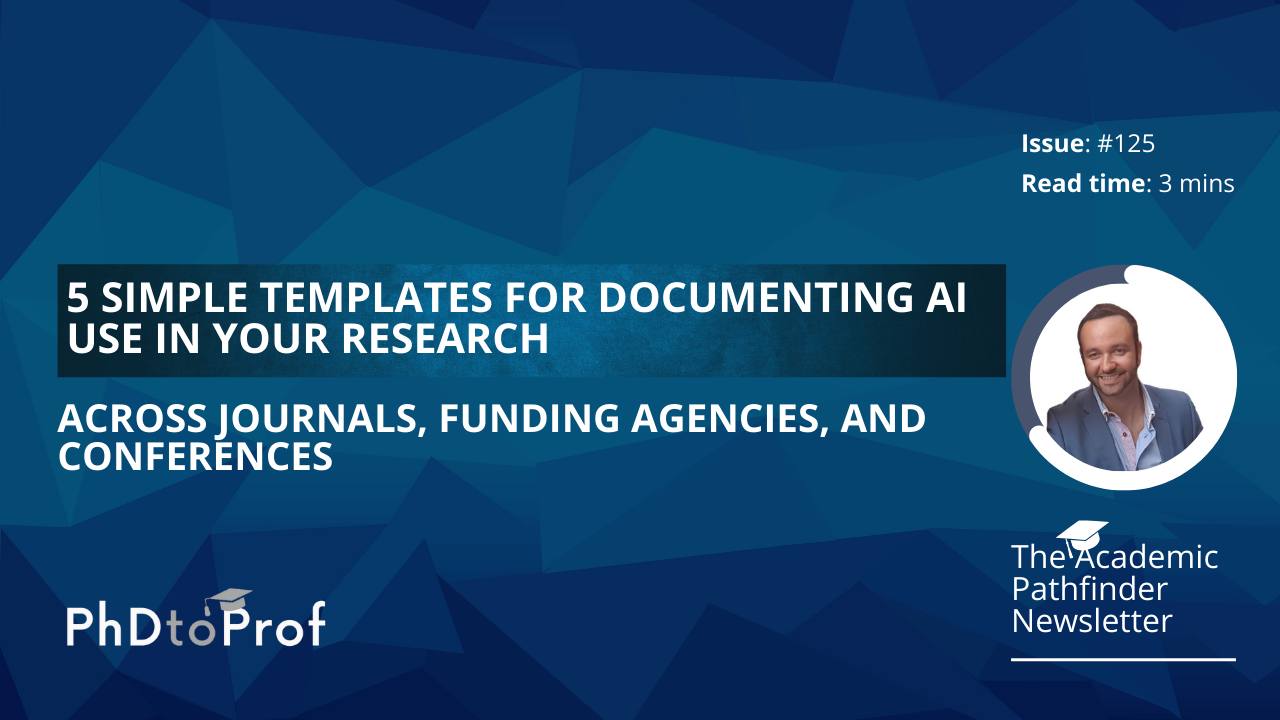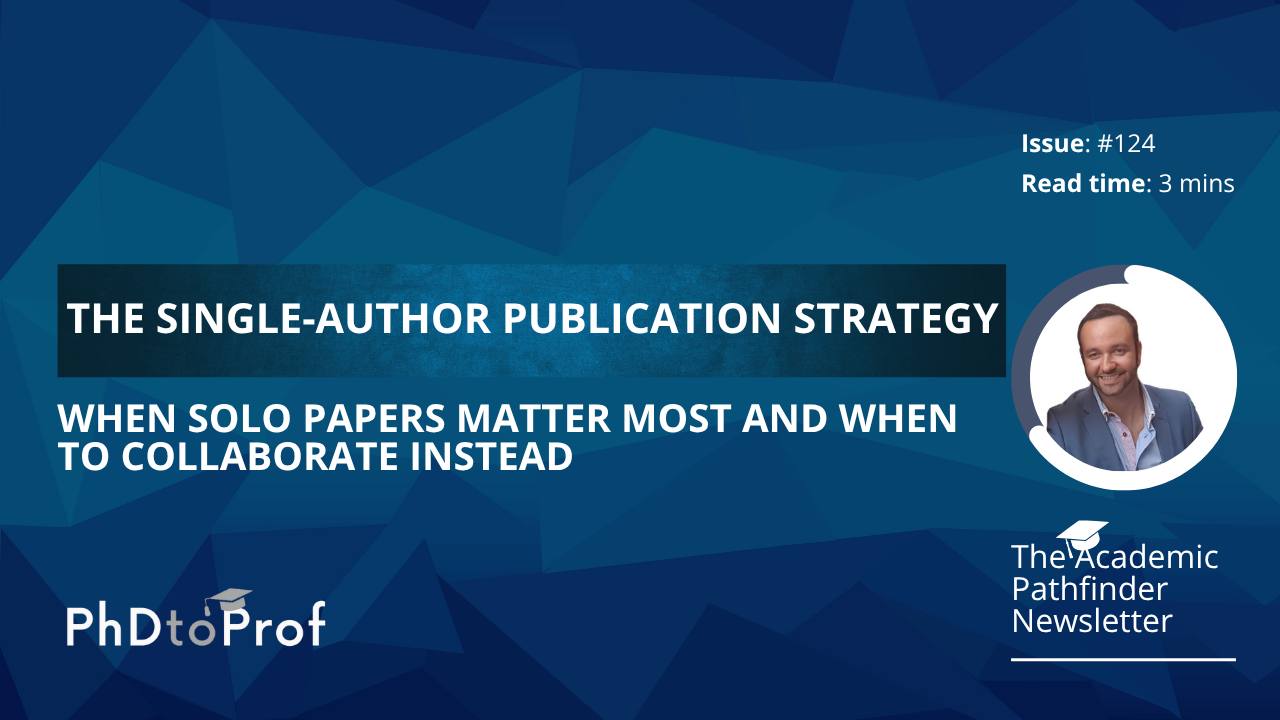#109 - How I Turned My Most Devastating Paper Rejection Into My Best Publication (5 Steps to Transform Failure Into Success)

Today, I'm sharing the exact five-step process I used to transform my most painful paper rejection into my highest-cited publication.
6 August 2025
Read time: 3 minutes
Supporting our sponsors directly helps me continue delivering valuable content for FREE to you each week. Your clicks make a difference! Thank you. Emmanuel
Get Expert Paper Feedback in Minutes with PaperCheck AI
Stop waiting weeks for supervisor feedback that may never come. PaperCheck AI acts as your personal AI paper supervisor, delivering comprehensive manuscript reviews in just 5 minutes - analyzing everything from argument structure and methodology to citations and grammar.
Transform your draft into a publication-ready paper with detailed feedback on abstracts, logical consistency, and comprehensive proofreading that catches errors before submission.
Try PaperCheck AI today and get the expert feedback you deserve, when you need it. Get 15% discount with my code: phdtoprof15
Getting your paper rejected hurts, especially when you've poured months of work into research you believe in.
Most researchers let rejection derail their confidence and momentum, sometimes abandoning good work entirely.
But what if rejection could actually make your research stronger and more impactful?
Today, I'm sharing the exact five-step process I used to transform my most painful paper rejection into my highest-cited publication.
This systematic approach to handling rejection has helped dozens of my mentees turn their biggest disappointments into career-defining successes.

Three years ago, I submitted what I thought was my best work to a top-tier journal.
The research was solid, the writing was clear, and the implications were significant.
Six months later, I received a devastating rejection with reviews that felt personal and unfair.
I spent two weeks feeling sorry for myself, then decided to approach the rejection strategically rather than emotionally.
The paper that eventually emerged from this process became my most cited work and opened doors I never expected.
More importantly, I developed a systematic method for handling future rejections that completely changed my relationship with the publication process.
Step #1: Create Emotional Distance Before Analyzing Feedback
The first 48 hours after rejection are crucial.
Your emotional reaction will cloud your ability to see useful feedback in the reviews.
How to do it:
- Set a firm rule that you won't read the reviews again or make any decisions about the paper for at least 48 hours after receiving the rejection.
- Use this time to process the disappointment without making it about your worth as a researcher.
After the waiting period, read the reviews once more with a highlighter, marking only concrete, actionable suggestions while ignoring tone or personal attacks.
Step #2: Separate Valid Criticism from Reviewer Bias
Not all reviewer feedback is created equal.
Some comments reveal genuine weaknesses while others reflect reviewer preferences or misunderstandings.
How to do it:
Create three categories for reviewer comments:
- Valid Points (genuine problems with your work),
- Preference Issues (things the reviewer would do differently but aren't necessarily wrong),
- and Misunderstandings (places where you failed to communicate clearly).
Focus your revision efforts on the Valid Points and Misunderstandings categories.
Address Preference Issues only if they're easy fixes that don't compromise your research integrity.
Step #3: Expand Your Research to Address Core Weaknesses
Sometimes rejection reveals that your work needs to be bigger and more comprehensive than you originally planned.
How to do it:
- Look for patterns in the Valid Points category.
- Do multiple reviewers question your sample size, methodology, or scope?
- Explore whether additional data, analysis, or experiments could address these fundamental concerns.
I discovered that my rejected paper needed two additional studies to fully support my conclusions.
While this meant six more months of work, it transformed a decent paper into a comprehensive contribution to the field.
Step #4: Completely Rewrite for Clarity and Impact
Often, good research fails because of poor presentation rather than weak content.
Rejection is an opportunity to reimagine how you tell your research story.
How to do it:
- Start fresh with a blank document instead of just editing your original manuscript.
- Write a new outline that addresses reviewer concerns while highlighting your strongest contributions.
- Focus on making every section crystal clear and easy to follow.
- Pay special attention to your introduction and conclusion.
These sections should make it impossible for readers to misunderstand your contribution or dismiss your work's importance.
Step #5: Target a Better-Fit Journal with Strategic Precision
The journal that rejected your work might simply be the wrong venue.
Finding the right audience can transform rejection into acceptance.
How to do it: Research journals where similar work has been published recently and well-received.
- Look for editors who have published work in your area and reviewers who understand your approach.
- Explore journals that are slightly more specialized than your original target.
Sometimes a more focused audience appreciates your work better than a general readership.
The Mindset Shift: From Personal Attack to Professional Development
The key to this entire process is changing how you think about rejection.
Instead of seeing it as judgment on your worth, view it as free consulting from experts in your field.
How to do it:
- Keep a rejection journal where you track what you learned from each rejection and how it improved your work.
- Over time, you'll see patterns that help you submit stronger initial manuscripts.
- Keep in mind that most groundbreaking research faces initial rejection.
Persistence combined with strategic improvement often leads to better outcomes than original acceptance would have provided.

Key Takeaways:
- Wait 48 hours before analyzing feedback to separate emotional reactions from useful criticism
- Categorize reviewer comments to focus improvement efforts on genuine weaknesses rather than preferences
- Consider expanding your research if rejection reveals fundamental gaps that additional work could address
-
→ Your Action Plan for This Week
- If you have a recent rejection, categorize the reviewer feedback into Valid Points, Preferences, and Misunderstandings
- Create a revision plan that addresses core weaknesses while maintaining your research integrity
- Research three alternative journals that might be better fits for your revised work
What's been your most challenging paper rejection experience? Reply and share how you handled it!
Well, that’s it for today.
See you next week.
Whenever you're ready, there are 3 ways I can help you:
1. Get free actionable tips on how to secure a tenure-track job in academia by following me on X, LinkedIn me Instagram and BlueSky
2. Take my proven Academic Job Accelerator Program that has helped hundreds of researchers secure academic positions, and start with my free training videos to learn the exact strategies hiring committees respond to.
3. If you're ready to take your PhD application journey to the next level, join my PhD Application and Scholarship Masterclass. Click the link below to learn more and secure your spot.





Responses